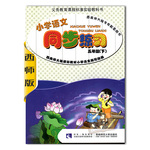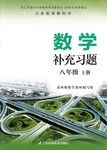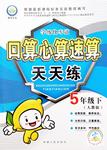
 同步練習西南師范大學出版社系列答案
同步練習西南師范大學出版社系列答案 補充習題江蘇系列答案
補充習題江蘇系列答案 學練快車道口算心算速算天天練系列答案
學練快車道口算心算速算天天練系列答案科目:高中英語 來源:湖南省長沙市一中2010年上學期高一第二次階段性考試英語試卷 題型:閱讀理解
The Olympic flame:
The Olympic flame is a symbol carried over from the ancient Olympics, where a sacred (神圣的) flame burned at the altar(神壇)of Zeus throughout competition. It was finally reintroduced at the 1924 Amsterdam Games, and again burned in 1932.
Carl Diem, chairman of the organising committee for the 1936 Berlin Games, proposed that the flame be lit in Greece and transported to Berlin via a torch relay. The idea was adopted, and continued at every Olympic Games since 1952.
The flame is lit at the ancient site of Olympia by the natural rays of the sun reflected off a curved mirror. It is lit at a ceremony by women dressed in robes resembling those worn in ancient times, who then pass it to the first relay runner.
Olympic motto:
“Citius, altius, fortius” is a Latin phrase meaning “swifter, higher, stronger”, which Baron de Coubertin borrowed from Father Henri Martin Dideon of Paris. Dideon was headmaster of Arcueil College, and used the phrase to describe the athletic achievements of students at the school. He had previously been at the Albert Le Grand school, where the Latin words were carved in stone above the main entrance.
Olympic oath(宣誓)
“In the name of all competitors, I promise that we shall take part in these Olympic Games, respecting and abiding by the rules that govern them, in the true spirit of sportsmanship, for the glory of sport and the honour of our teams.”
Written by Baron de Coubertin, the oath is taken by an athlete from the host nation while holding a corner of the Olympic flag. The athletes’ oath was first taken by Belgian fencer Victor Boin at the 1920 Antwerp Games. A judge from the host country also speaks the oath, with slightly different wording.
66. The Olympic flame was first burned at _______ in modern times.
A. the 1920 Games B. the 1924 Games
C. the 1932 Games D. the 1936 Games
67. From the passage we can learn ________.
A. before 1936, no flames burned at the Olympic Games
B. the first torch relay was held at the 1936 Berlin Games
C. Carl Diem proposed that flames should burn at the Olympic Games
D. The Olympic torch has burned since 1924
68. Which of the following is TRUE?
A. There was no athlete’s oath in the 1896 Olympic Games.
B. The 1920 Olympic games was held in Amsterdam.
C. The judge from the host country takes the same oath as the athletes does.
D. Dideon wrote Citius, Altius, Fortius for the Olympic Games.
查看答案和解析>>
科目:高中英語 來源:湖南省長沙市2010年上學期高一第二次階段性考試英語試卷 題型:閱讀理解
The Olympic flame:
The Olympic flame is a symbol carried over from the ancient Olympics, where a sacred (神圣的) flame burned at the altar(神壇)of Zeus throughout competition. It was finally reintroduced at the 1924 Amsterdam Games, and again burned in 1932.
Carl Diem, chairman of the organising committee for the 1936 Berlin Games, proposed that the flame be lit in Greece and transported to Berlin via a torch relay. The idea was adopted, and continued at every Olympic Games since 1952.
The flame is lit at the ancient site of Olympia by the natural rays of the sun reflected off a curved mirror. It is lit at a ceremony by women dressed in robes resembling those worn in ancient times, who then pass it to the first relay runner.
Olympic motto:
“Citius, altius, fortius” is a Latin phrase meaning “swifter, higher, stronger”, which Baron de Coubertin borrowed from Father Henri Martin Dideon of Paris. Dideon was headmaster of Arcueil College, and used the phrase to describe the athletic achievements of students at the school. He had previously been at the Albert Le Grand school, where the Latin words were carved in stone above the main entrance.
Olympic oath(宣誓)
“In the name of all competitors, I promise that we shall take part in these Olympic Games, respecting and abiding by the rules that govern them, in the true spirit of sportsmanship, for the glory of sport and the honour of our teams.”
Written by Baron de Coubertin, the oath is taken by an athlete from the host nation while holding a corner of the Olympic flag. The athletes’ oath was first taken by Belgian fencer Victor Boin at the 1920 Antwerp Games. A judge from the host country also speaks the oath, with slightly different wording.
66. The Olympic flame was first burned at _______ in modern times.
A. the 1920 Games B. the 1924 Games
C. the 1932 Games D. the 1936 Games
67. From the passage we can learn ________.
A. before 1936, no flames burned at the Olympic Games
B. the first torch relay was held at the 1936 Berlin Games
C. Carl Diem proposed that flames should burn at the Olympic Games
D. The Olympic torch has burned since 1924
68. Which of the following is TRUE?
A. There was no athlete’s oath in the 1896 Olympic Games.
B. The 1920 Olympic games was held in Amsterdam.
C. The judge from the host country takes the same oath as the athletes does.
D. Dideon wrote Citius, Altius, Fortius for the Olympic Games.
查看答案和解析>>
科目:高中英語 來源: 題型:閱讀理解
PART THREE READING COMPREHENSION
Directions: Read the following three passages. Each passage is followed by several questions or unfinished statements. For each of them there are 4 choices marked A,B,C and D. Choose the one that fits best according to the information given in the passage. (15%)
A
The Olympic flame:
The Olympic flame is a symbol carried over from the ancient Olympics, where a sacred (神圣的) flame burned at the altar(神壇)of Zeus throughout competition. It was finally reintroduced at the 1924 Amsterdam Games, and again burned in 1932.
Carl Diem, chairman of the organising committee for the 1936 Berlin Games, proposed that the flame be lit in Greece and transported to Berlin via a torch relay. The idea was adopted, and continued at every Olympic Games since 1952.
The flame is lit at the ancient site of Olympia by the natural rays of the sun reflected off a curved mirror. It is lit at a ceremony by women dressed in robes resembling those worn in ancient times, who then pass it to the first relay runner.
Olympic motto:
“Citius, altius, fortius” is a Latin phrase meaning “swifter, higher, stronger”, which Baron de Coubertin borrowed from Father Henri Martin Dideon of Paris. Dideon was headmaster of Arcueil College, and used the phrase to describe the athletic achievements of students at the school. He had previously been at the Albert Le Grand school, where the Latin words were carved in stone above the main entrance.
Olympic oath(宣誓)
“In the name of all competitors, I promise that we shall take part in these Olympic Games, respecting and abiding by the rules that govern them, in the true spirit of sportsmanship, for the glory of sport and the honour of our teams.”
Written by Baron de Coubertin, the oath is taken by an athlete from the host nation while holding a corner of the Olympic flag. The athletes’ oath was first taken by Belgian fencer Victor Boin at the 1920 Antwerp Games. A judge from the host country also speaks the oath, with slightly different wording.
66. The Olympic flame was first burned at _______ in modern times.
A. the 1920 Games B. the 1924 Games
C. the 1932 Games D. the 1936 Games
67. From the passage we can learn ________.
A. before 1936, no flames burned at the Olympic Games
B. the first torch relay was held at the 1936 Berlin Games
C. Carl Diem proposed that flames should burn at the Olympic Games
D. The Olympic torch has burned since 1924
68. Which of the following is TRUE?
A. There was no athlete’s oath in the 1896 Olympic Games.
B. The 1920 Olympic games was held in Amsterdam.
C. The judge from the host country takes the same oath as the athletes does.
D. Dideon wrote Citius, Altius, Fortius for the Olympic Games.
查看答案和解析>>
科目:高中英語 來源: 題型:閱讀理解
The Olympic flame:
The Olympic flame is a symbol carried over from the ancient Olympics, where a sacred (神圣的) flame burned at the altar(神壇)of Zeus throughout competition. It was finally reintroduced at the 1924 Amsterdam Games, and again burned in 1932.
Carl Diem, chairman of the organising committee for the 1936 Berlin Games, proposed that the flame be lit in Greece and transported to Berlin via a torch relay. The idea was adopted, and continued at every Olympic Games since 1952.
The flame is lit at the ancient site of Olympia by the natural rays of the sun reflected off a curved mirror. It is lit at a ceremony by women dressed in robes resembling those worn in ancient times, who then pass it to the first relay runner.
Olympic motto:
“Citius, altius, fortius” is a Latin phrase meaning “swifter, higher, stronger”, which Baron de Coubertin borrowed from Father Henri Martin Dideon of Paris. Dideon was headmaster of Arcueil College, and used the phrase to describe the athletic achievements of students at the school. He had previously been at the Albert Le Grand school, where the Latin words were carved in stone above the main entrance.
Olympic oath(宣誓)
“In the name of all competitors, I promise that we shall take part in these Olympic Games, respecting and abiding by the rules that govern them, in the true spirit of sportsmanship, for the glory of sport and the honour of our teams.”
Written by Baron de Coubertin, the oath is taken by an athlete from the host nation while holding a corner of the Olympic flag. The athletes’ oath was first taken by Belgian fencer Victor Boin at the 1920 Antwerp Games. A judge from the host country also speaks the oath, with slightly different wording.
66. The Olympic flame was first burned at _______ in modern times.
A. the 1920 Games B. the 1924 Games
C. the 1932 Games D. the 1936 Games
67. From the passage we can learn ________.
A. before 1936, no flames burned at the Olympic Games
B. the first torch relay was held at the 1936 Berlin Games
C. Carl Diem proposed that flames should burn at the Olympic Games
D. The Olympic torch has burned since 1924
68. Which of the following is TRUE?
A. There was no athlete’s oath in the 1896 Olympic Games.
B. The 1920 Olympic games was held in Amsterdam.
C. The judge from the host country takes the same oath as the athletes does.
D. Dideon wrote Citius, Altius, Fortius for the Olympic Games.
查看答案和解析>>
科目:高中英語 來源: 題型:閱讀理解
The Olympic flame:
The Olympic flame is a symbol carried over from the ancient Olympics, where a sacred (神圣的) flame burned at the altar(神壇)of Zeus throughout competition. It was finally reintroduced at the 1924 Amsterdam Games, and again burned in 1932.
Carl Diem, chairman of the organising committee for the 1936 Berlin Games, proposed that the flame be lit in Greece and transported to Berlin via a torch relay. The idea was adopted, and continued at every Olympic Games since 1952.
The flame is lit at the ancient site of Olympia by the natural rays of the sun reflected off a curved mirror. It is lit at a ceremony by women dressed in robes resembling those worn in ancient times, who then pass it to the first relay runner.
Olympic motto:
“Citius, altius, fortius” is a Latin phrase meaning “swifter, higher, stronger”, which Baron de Coubertin borrowed from Father Henri Martin Dideon of Paris. Dideon was headmaster of Arcueil College, and used the phrase to describe the athletic achievements of students at the school. He had previously been at the Albert Le Grand school, where the Latin words were carved in stone above the main entrance.
Olympic oath(宣誓)
“In the name of all competitors, I promise that we shall take part in these Olympic Games, respecting and abiding by the rules that govern them, in the true spirit of sportsmanship, for the glory of sport and the honour of our teams.”
Written by Baron de Coubertin, the oath is taken by an athlete from the host nation while holding a corner of the Olympic flag. The athletes’ oath was first taken by Belgian fencer Victor Boin at the 1920 Antwerp Games. A judge from the host country also speaks the oath, with slightly different wording.
1. The Olympic flame was first burned at _______ in modern times.
A. the 1920 Games B. the 1924 Games
C. the 1932 Games D. the 1936 Games
2. From the passage we can learn ________.
A. before 1936, no flames burned at the Olympic Games
B. the first torch relay was held at the 1936 Berlin Games
C. Carl Diem proposed that flames should burn at the Olympic Games
D. The Olympic torch has burned since 1924
3. Which of the following is TRUE?
A. There was no athlete’s oath in the 1896 Olympic Games.
B. The 1920 Olympic games was held in Amsterdam.
C. The judge from the host country takes the same oath as the athletes does.
D. Dideon wrote Citius, Altius, Fortius for the Olympic Games.
查看答案和解析>>
湖北省互聯網違法和不良信息舉報平臺 | 網上有害信息舉報專區 | 電信詐騙舉報專區 | 涉歷史虛無主義有害信息舉報專區 | 涉企侵權舉報專區
違法和不良信息舉報電話:027-86699610 舉報郵箱:58377363@163.com